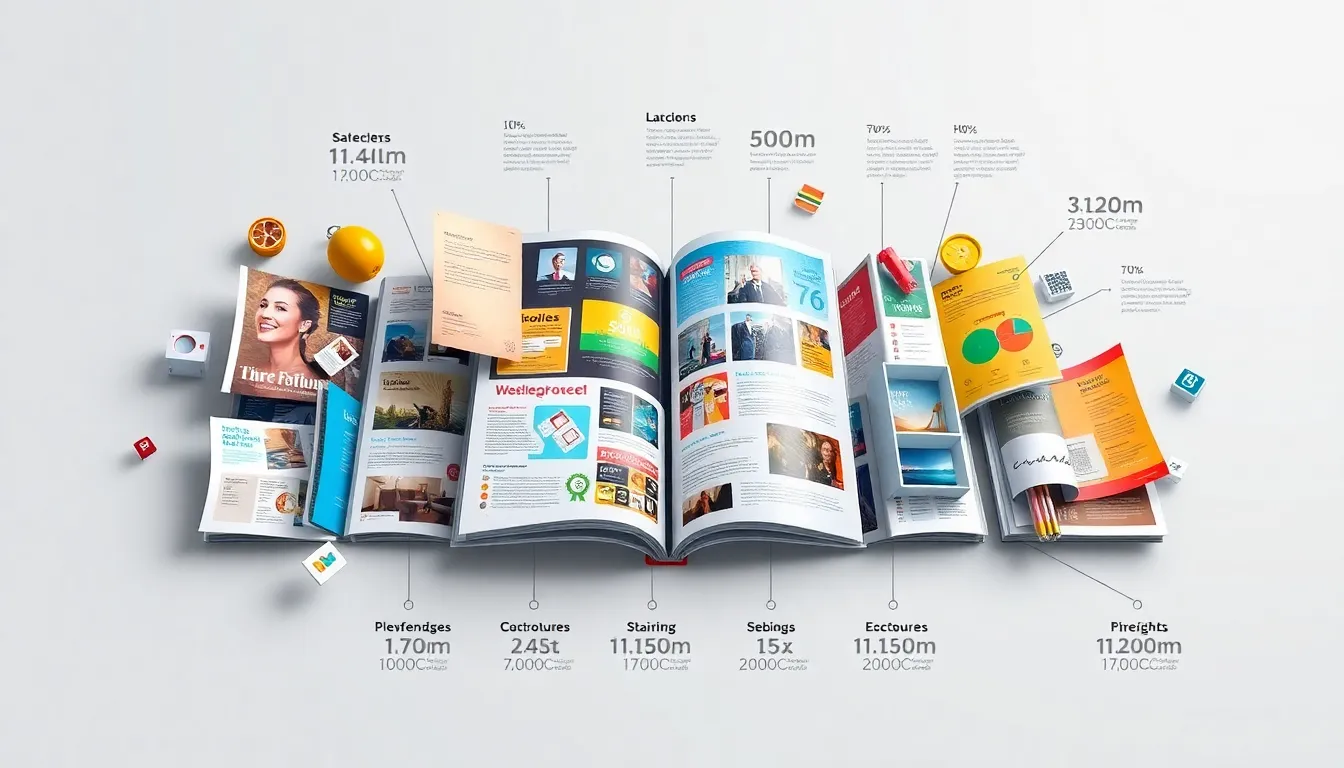Table of Contents
ToggleIn a world overflowing with information, unique magazine content stands out as a beacon of creativity and insight. Readers crave fresh perspectives and engaging stories that resonate with their experiences. Magazines that break the mold not only capture attention but also foster a loyal audience eager for more.
Creating distinctive content involves more than just a catchy headline. It requires a deep understanding of the target audience and a willingness to explore unconventional topics. From thought-provoking interviews to immersive storytelling, unique magazine content can ignite conversations and inspire action. As the publishing landscape evolves, the demand for originality has never been higher, making it essential for editors and writers to think outside the box.
Understanding Unique Magazine Content
Unique magazine content represents original, creative material that captivates and engages readers. It stands apart in a crowded market by offering fresh insights and stories that resonate deeply with the audience.
Definition of Unique Content
Unique content refers to articles, features, or visuals that provide new, original perspectives or approaches. It avoids duplication of existing ideas, relying instead on exclusive research, interviews, or narrative styles. By highlighting lesser-known topics, unique content enriches the reader’s experience, fostering a connection through authenticity and originality.
Importance in the Magazine Industry
- Reader Engagement: Unique content captures attention, keeping readers interested and encouraging them to return for more.
- Brand Differentiation: Magazines offering distinctive material stand out from competitors, enhancing brand identity and loyalty.
- SEO Benefits: Unique articles improve search engine rankings, attracting organic traffic and increasing visibility.
- Shareability: Engaging, original content is more likely to be shared on social media platforms, broadening audience reach.
- Industry Authority: Magazines providing unique insights establish themselves as thought leaders, fostering trust and credibility among readers.
Types of Unique Magazine Content

Unique magazine content encompasses several types that amplify reader engagement and establish a magazine’s identity. The following categories represent effective formats for delivering fresh insights and stories.
Feature Articles
Feature articles offer in-depth exploration on specific topics, allowing for a comprehensive presentation. They include first-hand accounts, expert interviews, or detailed analyses. Feature articles draw readers in by providing engaging narratives, unique angles, and a blend of factual information with storytelling. Successful feature articles typically range from 1,500 to 3,000 words and address trending issues, cultural phenomena, or social movements.
Infographics and Visuals
Infographics and visuals condense complex data into easily digestible formats. They combine graphics with informative text to create eye-catching representations of information. Infographics enhance reader comprehension and attract attention through vibrant designs and clever layouts. These visuals serve to illustrate statistics, contrasting viewpoints, or chronological developments, and often shareable, increasing the magazine’s reach on social platforms.
Special Issues
Special issues focus on specific themes or events, providing a concentrated exploration of topics. These issues may celebrate anniversaries, cultural events, or seasonal changes, allowing for a curated selection of articles, essays, and visuals. Special issues typically entice readers by offering exclusive content, unique perspectives, or comprehensive coverage of niche topics.
Strategies for Creating Unique Magazine Content
Creating unique magazine content involves strategic approaches that resonate with audiences while standing out in a competitive landscape. Focused research and collaboration enhance originality and reader engagement.
Research and Audience Understanding
Researching target audiences establishes essential insights into their preferences, interests, and behaviors. Understanding demographic data, reading habits, and trending topics guides content development to align with audience expectations. Conducting surveys and utilizing analytics tools reveals what captivates readers most. Regularly tracking industry trends ensures content remains relevant, appealing, and engaging. Monitoring competitors helps identify gaps in the market that can inspire unique content themes.
Collaborations with Creators
Collaborating with creators brings fresh perspectives and diverse storytelling styles. Partnerships with freelance writers, artists, and subject matter experts infuse originality into magazine content. Working with influencers can widen reach and attract new readership by tapping into their audiences. Co-creating content with established brands or organizations enhances credibility while offering exclusive insights. Engaging with local talents fosters community connections and unique narratives that resonate more deeply with readers.
Case Studies of Successful Unique Magazine Content
Unique magazine content thrives in various innovative formats. These formats showcase creativity while engaging readers effectively.
Example 1: Innovative Layouts
Innovative layouts in magazines offer visually stimulating experiences that enhance storytelling. Wired Magazine, for instance, employs dynamic page designs that change with each feature. This layout captivates readers, aligning visuals with text to create immersive narratives. National Geographic also excels with intricate photo essays that integrate stunning imagery with impactful storytelling, elevating the reader’s experience. These layouts emphasize the significance of visual appeal in retaining audience interest.
Example 2: Engaging Storytelling
Engaging storytelling fosters a deeper connection with readers. The New York Times Magazine regularly features personal essays that highlight real-life experiences, drawing in readers through relatable narratives. The publication’s “Modern Love” column showcases heartfelt stories that resonate universally, enhancing reader engagement. Similarly, Smithsonian Magazine combines history and storytelling. It presents unique perspectives on historical events, drawing in readers with captivating tales of the past. These examples illustrate how compelling narratives not only inform but also forge emotional connections.
Unique magazine content is essential for standing out in today’s crowded media landscape. By prioritizing originality and creativity, publishers can connect more deeply with their audiences. Engaging formats and fresh perspectives not only attract readers but also foster loyalty and brand recognition.
As the demand for unique content grows, magazines must adapt and innovate. By leveraging data and collaboration, they can uncover new opportunities for captivating storytelling. The future of magazine publishing hinges on the ability to deliver compelling narratives that resonate with readers. Embracing this challenge will ensure relevance and success in an ever-evolving industry.




